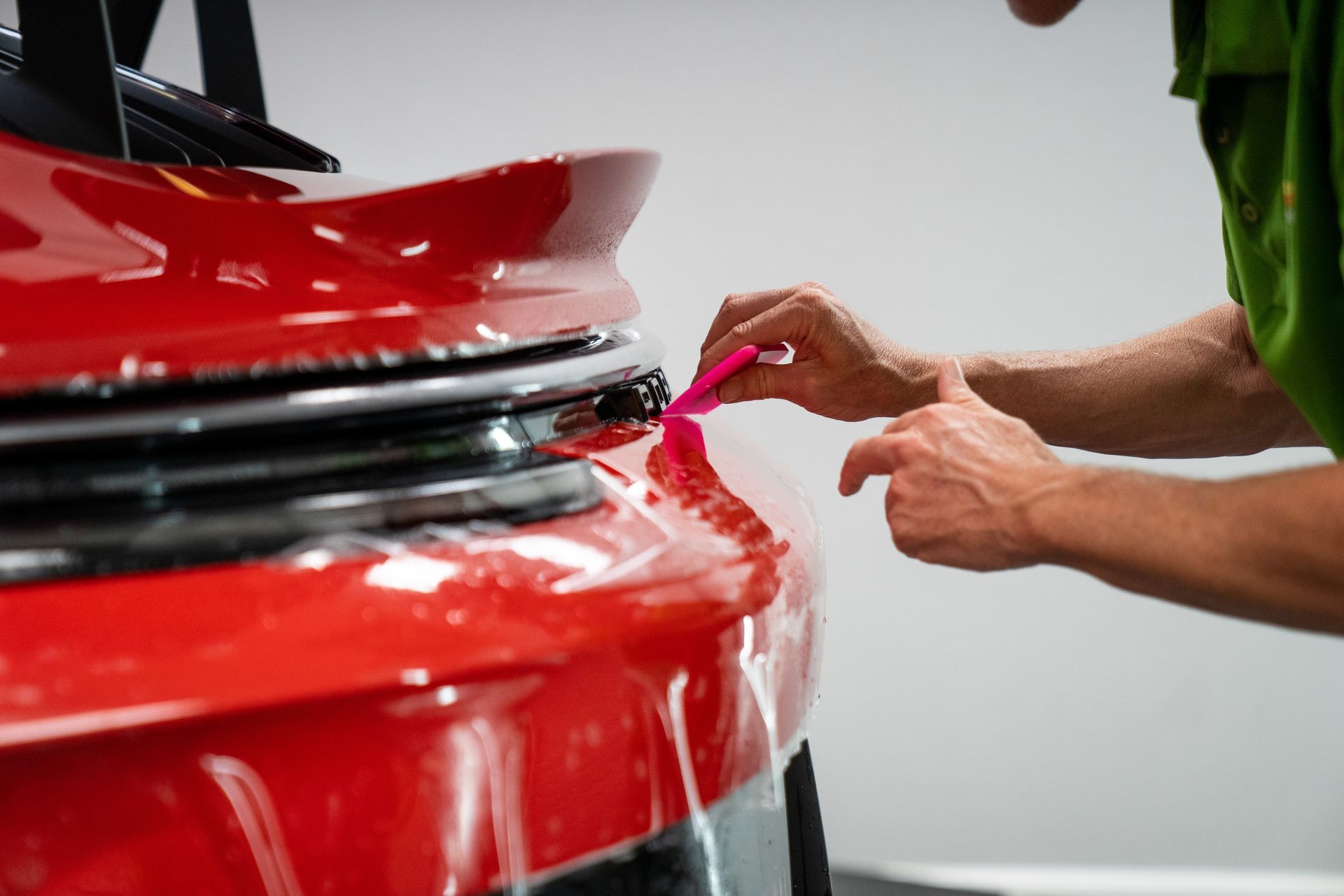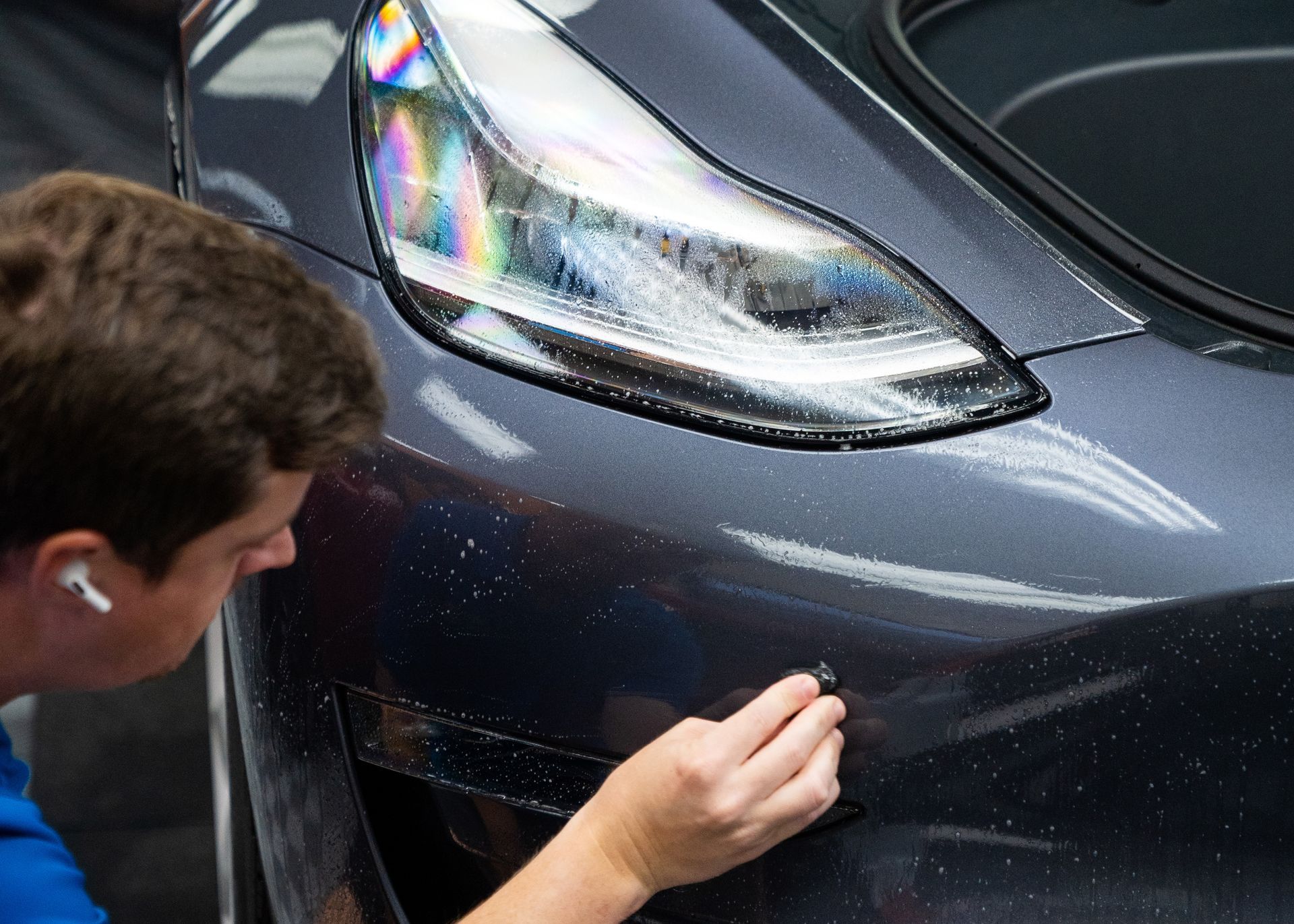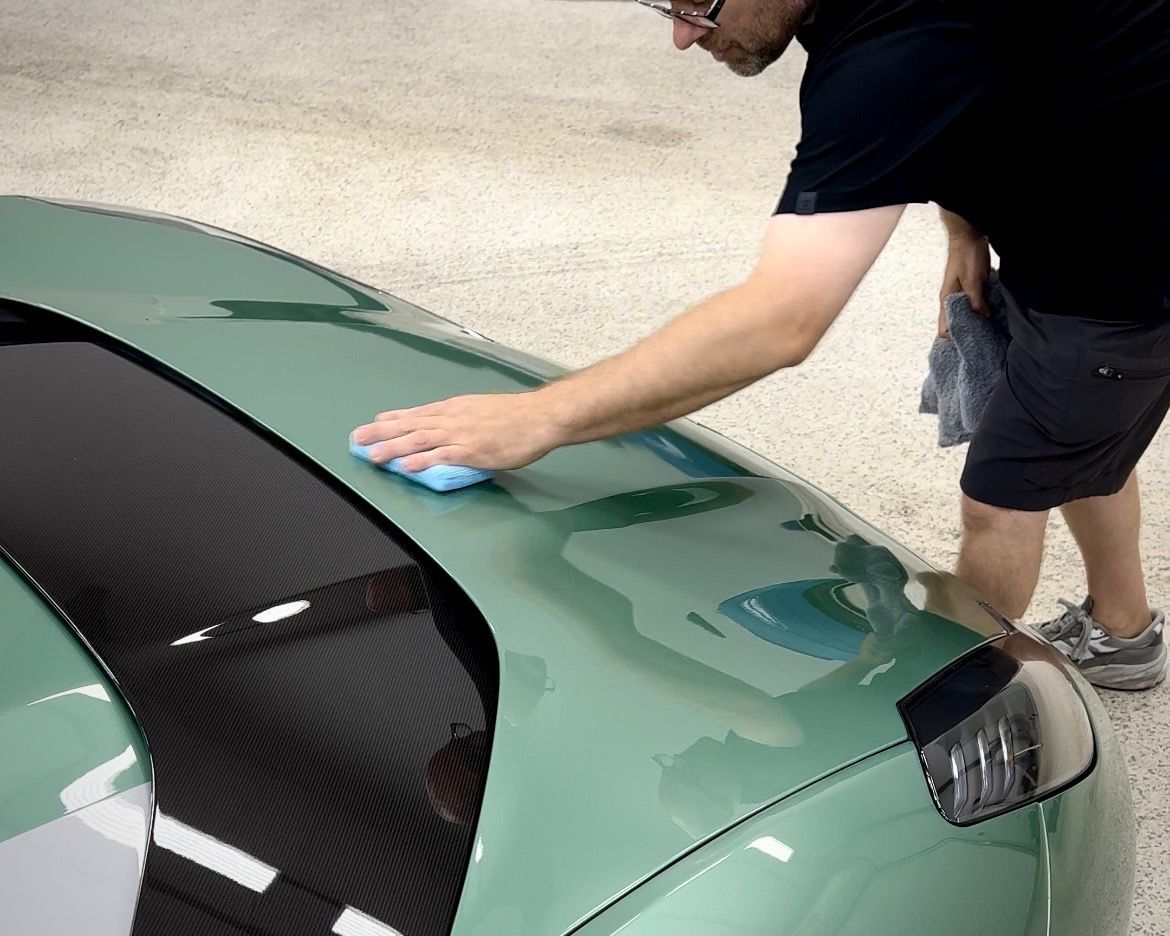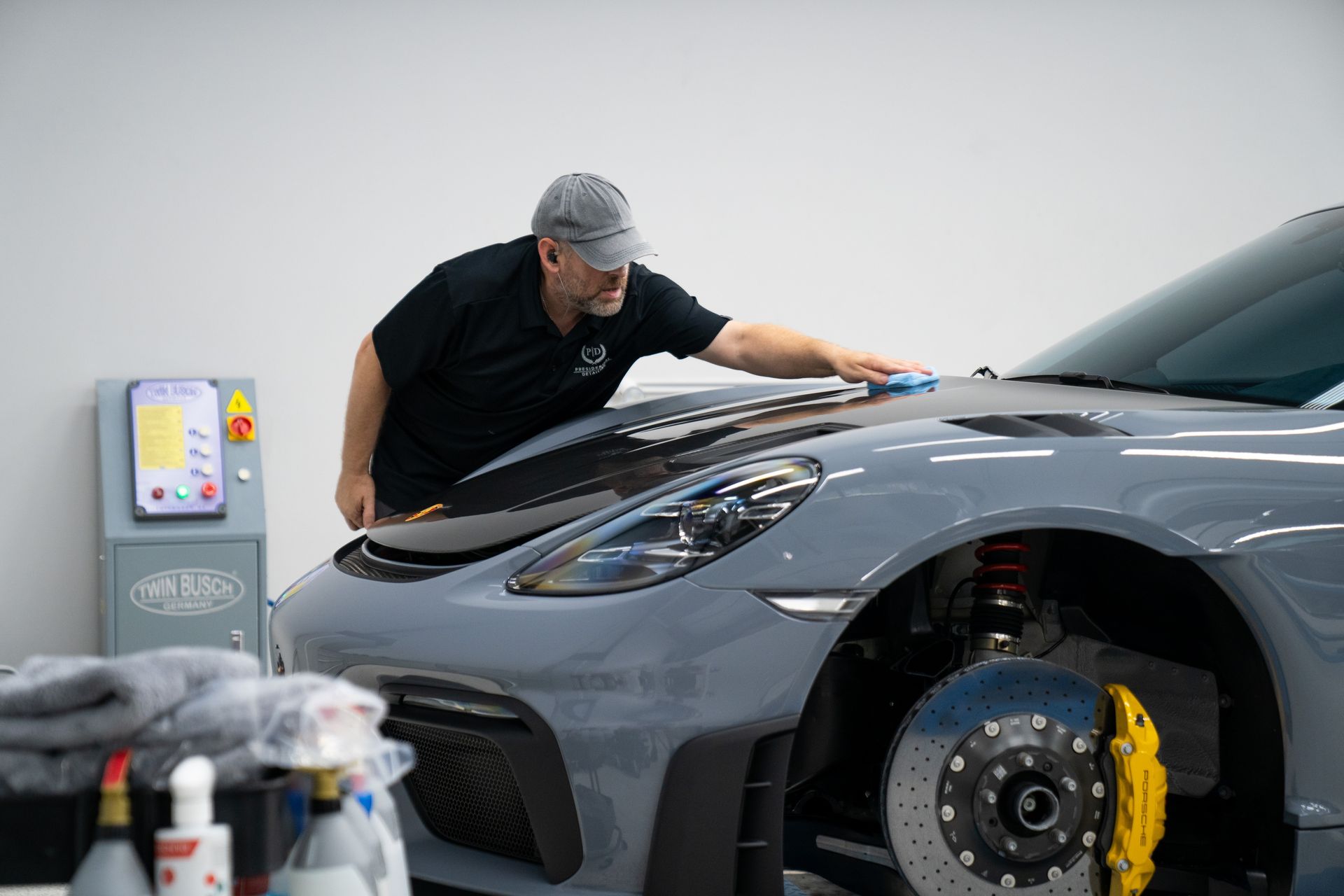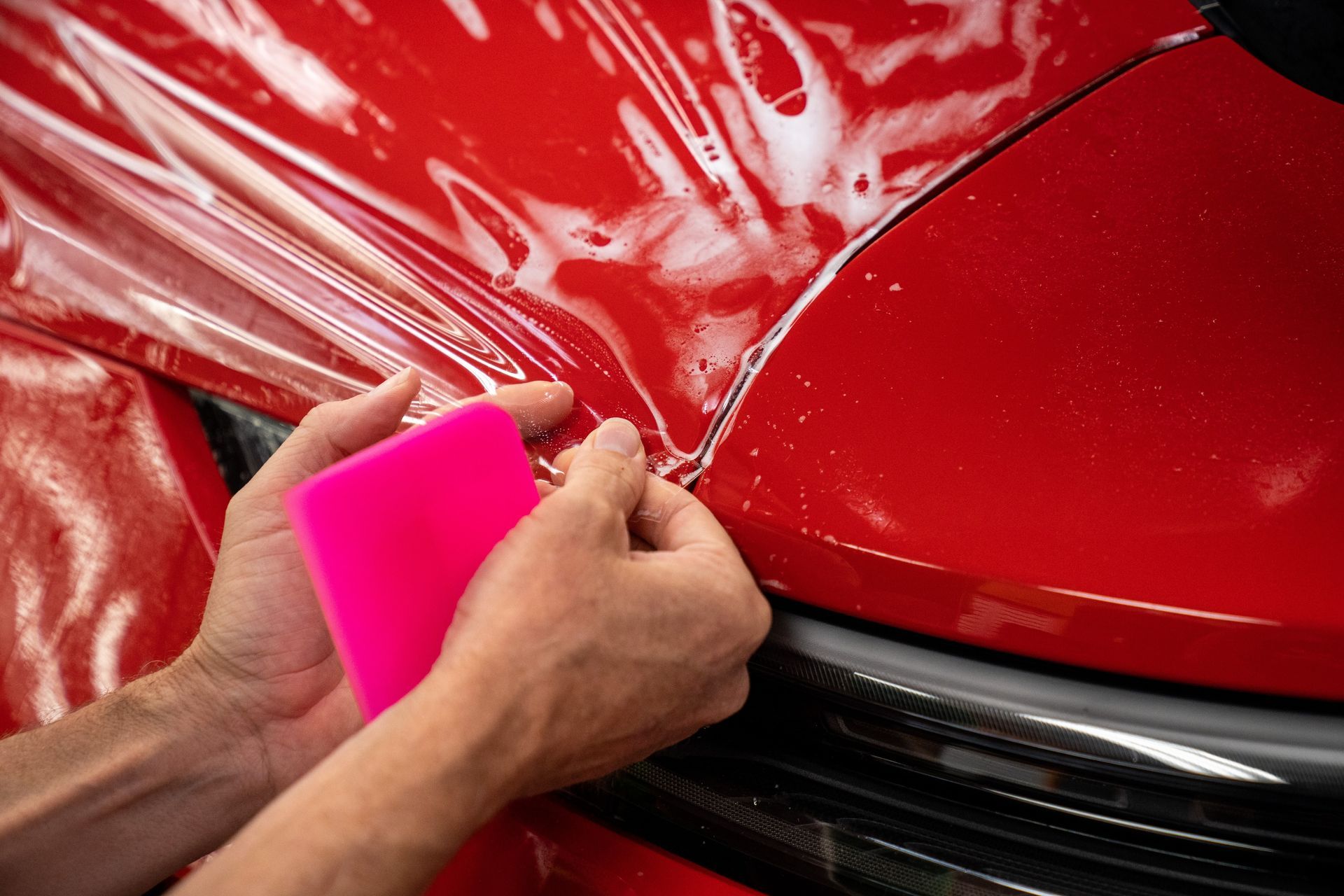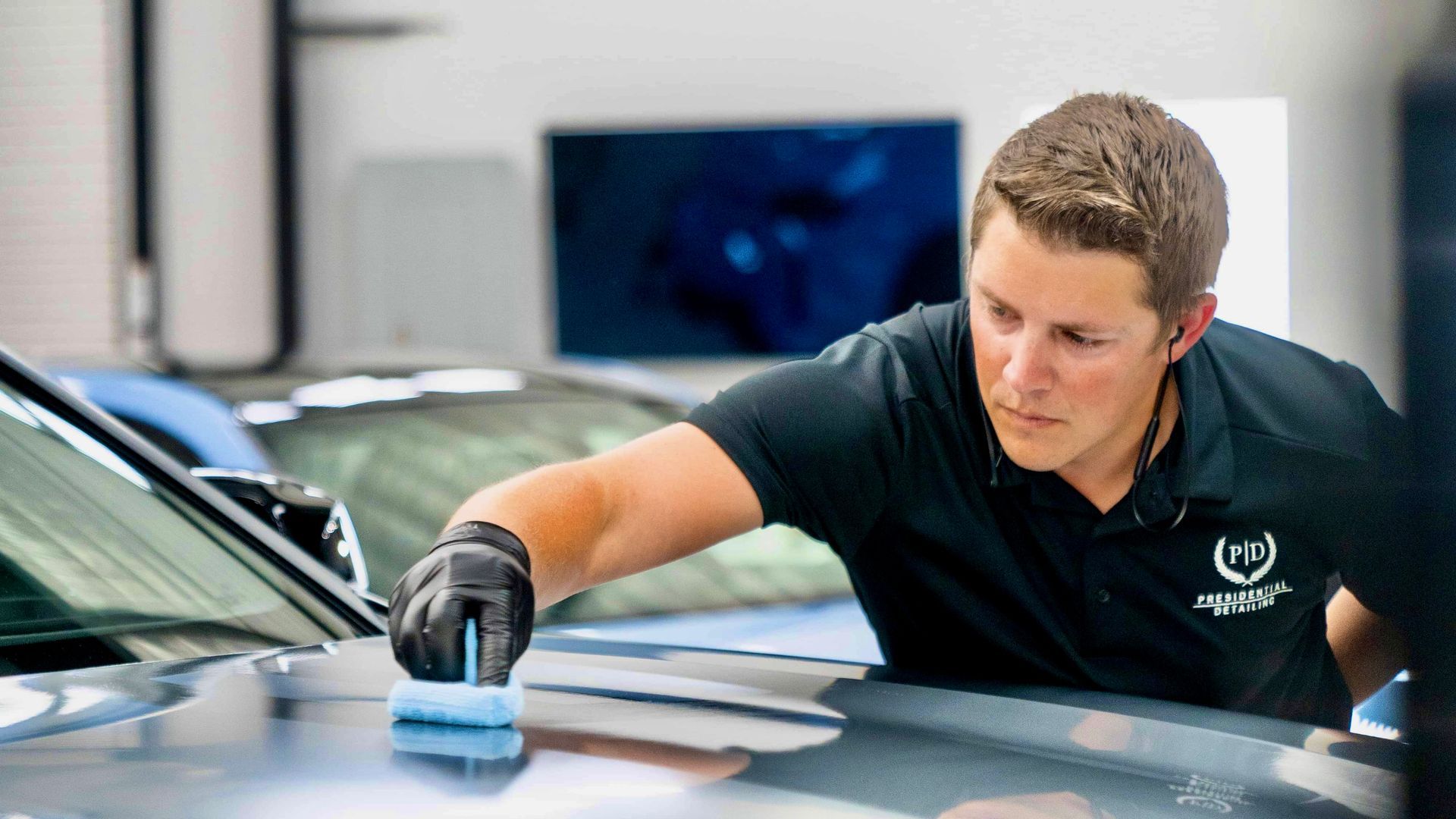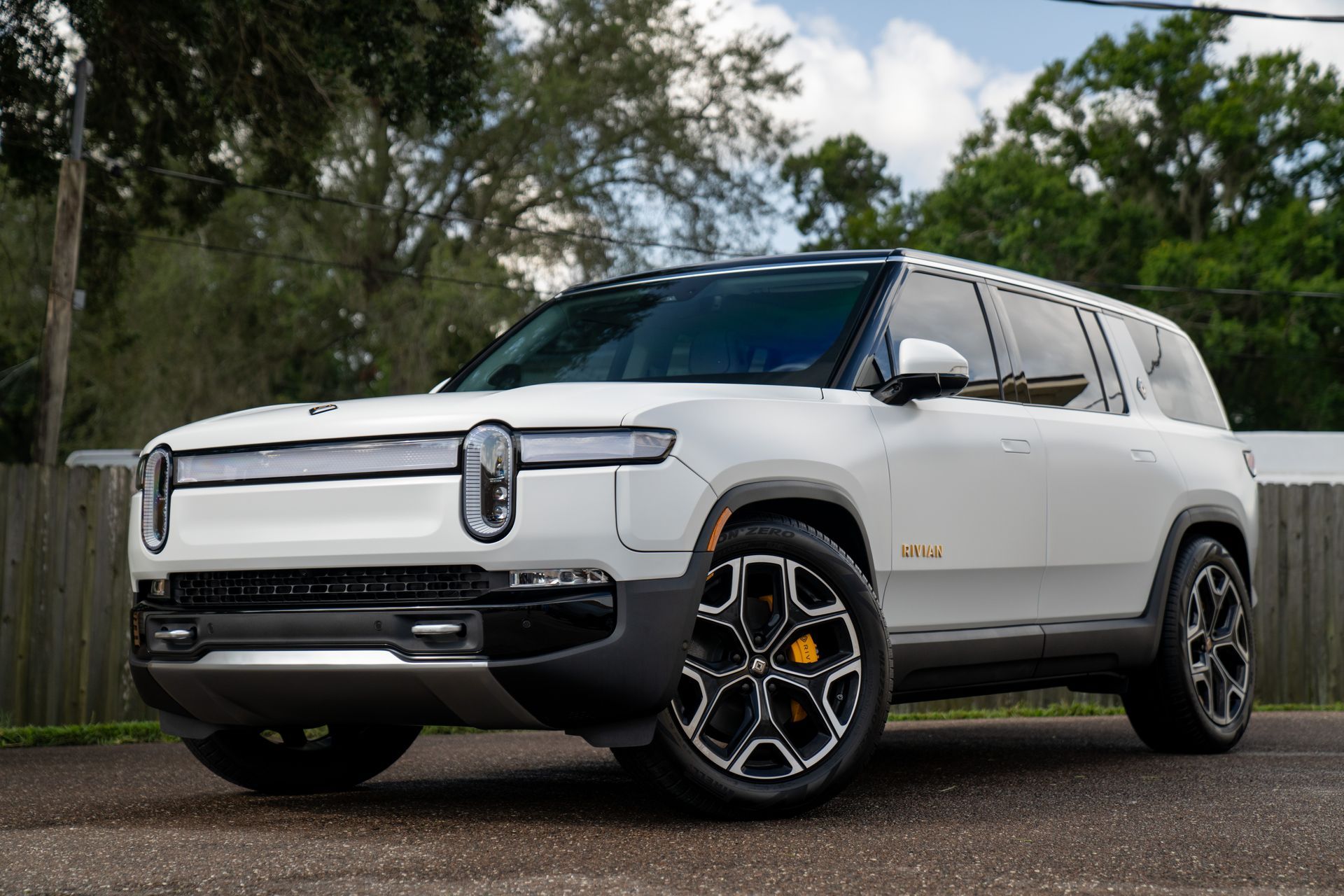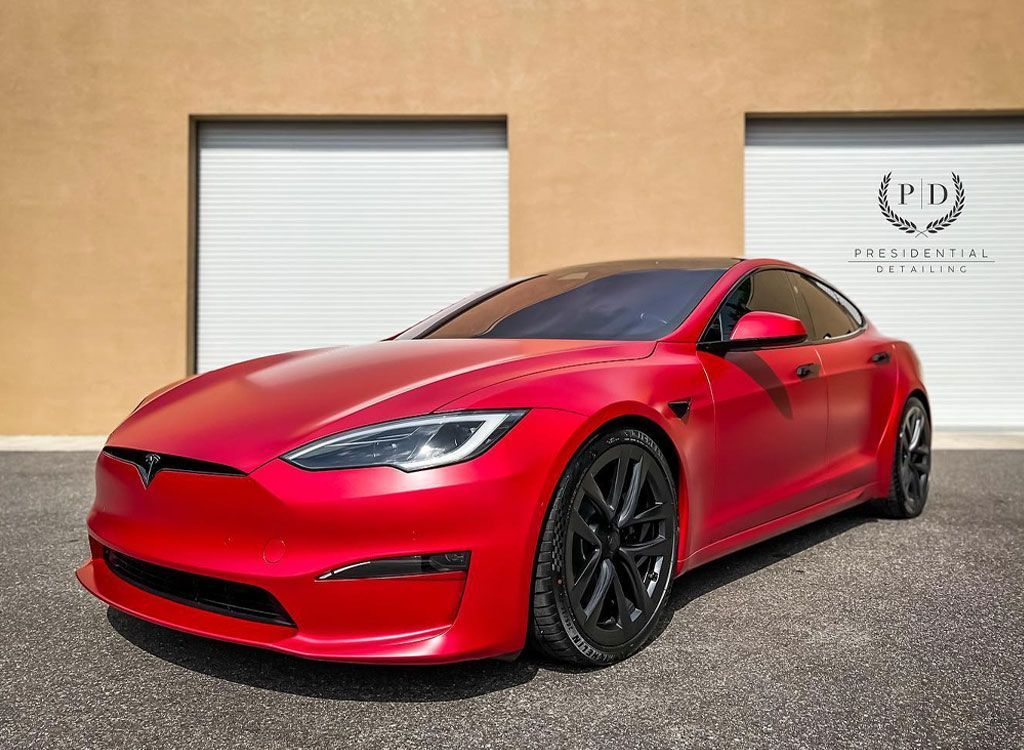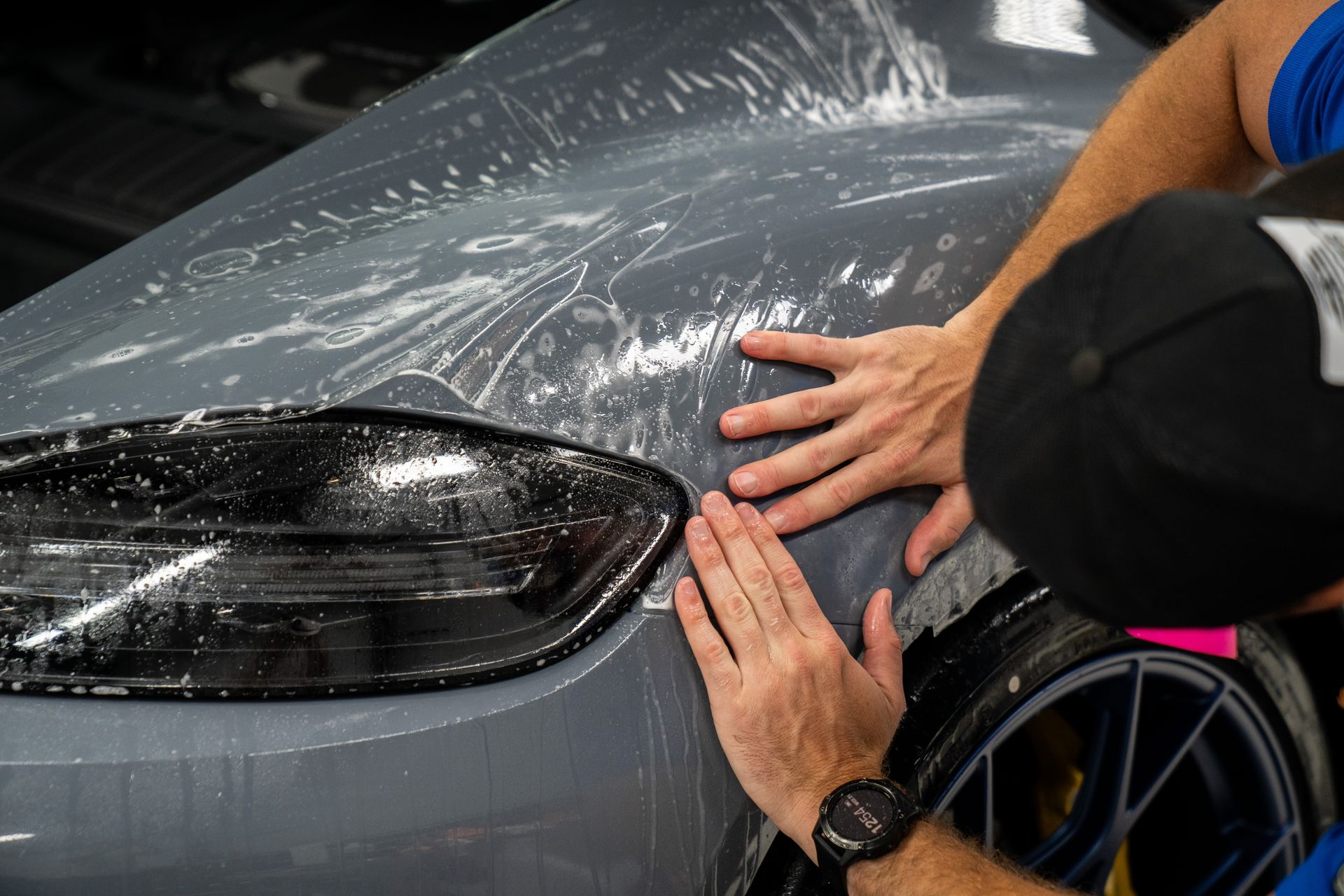Ceramic Coating for Cars: The Ultimate Guide to Durability and Cost-Effectiveness
CALL (813) 723-9679
GET A FREE ESTIMATEMaintaining that showroom finish on your car can feel like an endless uphill battle, especially if you're still depending on traditional waxes that wear off after just a few months. It's no surprise then that you might be curious about ceramic coatings—a topic buzzing at car shows and among auto enthusiasts—and how they promise long-lasting protection with less frequent upkeep. We've dug deep into the world of ceramic coatings to explore their true durability and cost-effectiveness.
Ceramic coating is considered a cost-effective solution for protecting a car's paint due to its long-term durability, which helps reduce the frequency of reapplications and maintenance expenses. While the initial investment may be higher, the long-term benefits outweigh the cost, making it a worthwhile investment for preserving the aesthetic appeal and value of your vehicle.
What is Ceramic Coating?
Ceramic coating isn't just another layer you put on your car—it's like armor for your vehicle's paint. Imagine it as a protective shield, shielding your car from the elements while providing a glossy finish. But let's break it down to the basics. When applied to your car's painted surface, the ceramic coating chemically bonds with the factory paint. This creates a protective layer that offers enhanced durability and longevity compared to traditional waxes. This means better protection against UV rays, bird droppings, acidic contaminants, and general wear over time.
The secret behind a ceramic coating's hardness and glossiness lies in its silica-based formulation. Silica, a primary component of glass, brings out a similar hardness and glossy finish after bonding with the car's paint. This glossy finish isn't just for show; it repels water and dirt, giving your car that freshly waxed look for an extended period of time. Gtechniq Crystal Serum is a trusted name when considering which ceramic coating to apply to your car.
Take Gtechniq Crystal Serum, for instance—a brand recognized for its durability and resistance to dirt. Its ability to form a permanent bond with your car's surface makes it a strong contender in the market. It also provides protection against UV rays with its high content of SiO2 (silicon dioxide). Understanding the science behind ceramic coatings and getting acquainted with reputable brands gives us a solid foundation to explore how application methods differ and their impact on overall quality.
Benefits for Car Durability
The investment in a ceramic coating isn't just about keeping your car shiny; it extends to safeguarding your vehicle's integrity against various environmental and physical elements. Let's explore the specific advantages in more detail.
- UV and Oxidation Protection: The sun's rays can be harsh on your car's paint, causing it to fade and lose its luster over time. Ceramic coatings provide a potent shield against harmful UV rays, significantly reducing the impact of oxidation, which is the process where oxygen starts to bond with the paint molecules. This protection ensures that your car maintains its color depth and gloss for years to come.
- Chemical Resistance: From bird droppings and tree sap to road salt and acidic contaminants, these are everyday challenges for your car's exterior. Ceramic coatings offer high protection against these corrosive substances, effectively safeguarding the paint from etching and staining, which are common outcomes when left untreated.
- Longevity: One of the most appealing aspects of ceramic coatings is their durability. Professional application can provide protection for an impressive 2 to 5 years—a noteworthy contrast to traditional waxing, which may only offer protection for a few months at best. This prolonged lifespan minimizes the need for frequent reapplications and preserves your vehicle's aesthetic appeal over the long term.
- Ease of Maintenance: The reduction in maintenance requirements is not just a convenience; it also saves you time and money in the long run, as you won't need to spend as much effort or funds on frequent touch-ups and detailing appointments.
The overall benefit of saving time, preserving your car's appearance, and lowering potential repair costs underscores the true value of investing in ceramic coating for your car.
Cost Factors of Application
When it comes to ceramic coating, several factors can significantly impact its cost. Let's explore these in more detail.
- Quality of Materials: The quality of the ceramic coating material directly affects its cost. High-end ceramic coatings are generally more expensive due to their superior bonding capabilities and longevity. These premium-grade coatings form a resilient layer, providing enhanced protection for your car's paintwork.
- Size and Type of Vehicle: The size and type of your vehicle play a crucial role in determining the overall cost of ceramic coating application. Larger vehicles, such as SUVs and trucks, require more ceramic coating products and labor, naturally increasing the overall cost. Similarly, specialty or luxury vehicles often have intricate designs or unique features that require additional care during the application process, contributing to higher costs.
- Geographic Location: Geographic location is another significant factor influencing the cost of ceramic coating application. Service costs can vary greatly by region, and urban areas typically have higher pricing due to increased demand and operating costs. It's important to consider location-specific pricing when budgeting for ceramic coating.
- Reputation of Service Provider: The reputation and expertise of the service provider also play a key role in determining the cost of ceramic coating application. Highly-rated detailers who have established a strong reputation for delivering exceptional quality and service may charge higher prices for their expertise. The added cost often reflects the level of skill, precision, and reliability offered by reputable professionals.
On average, professional applications performed by experienced detailers typically range from $500 to $3000 or more, depending on the factors mentioned above. While professional application guarantees expert handling and optimal results, it's important to be prepared for a significant but worthwhile investment in protecting your vehicle. For those looking for a more budget-friendly option or preferring a hands-on approach, DIY ceramic coating kits are available at a significantly lower cost, ranging from $50 to $150. However, it's essential to carefully consider the drawbacks associated with DIY applications. These kits often come with limitations in terms of product quality and longevity compared to professional-grade coatings. Improper application can lead to subpar results and potentially compromise the protective benefits of ceramic coating.
So when considering the cost of ceramic coating, it's important to weigh the advantages and potential drawbacks based on your specific needs and expectations. Investing in quality ceramic coating not only offers long-term protection for your vehicle but also contributes to maintaining its appearance and value over time.
Comparing Ceramic to Waxes
When it comes to protecting your car's exterior, there are various options available, each with its own advantages. To better understand which one is right for you, let's dive into the differences between ceramic coatings and traditional waxes—the heavyweight champions in car protection.
Durability
Ceramic coatings have been praised for their remarkable durability, with some lasting for several years. This is a stark contrast to traditional waxes, which typically require reapplication every few months. The longevity of ceramic coatings means less frequent maintenance, reducing the hassle of constantly having to reapply wax to your car's exterior. A ceramic coating creates a chemical bond with the surface of your car, forming a protective layer that resists environmental contaminants, UV rays, and harsh detergents. On the other hand, waxes sit on the surface of the paint; therefore, their protective abilities are more short-lived as they can be washed away with detergents and environmental exposure.
Protection
To put it simply, using wax to protect your car is akin to wearing a raincoat in a hurricane, while employing a ceramic coating is like armor that shields against all kinds of hazards. Ceramic coatings offer superior protection against environmental elements, making them an ideal choice for those who want long-lasting defense against the elements.
Cost Over Time
At first glance, the initial cost of applying a ceramic coating might cause some hesitation—after all, it is pricier than a simple bottle of car wax. However, the true value of ceramic coatings becomes apparent when considering their long-term cost-effectiveness. While waxes may seem more affordable upfront, the continuous need for reapplication adds up quickly and can surpass the initial cost of a high-quality ceramic coating. By requiring fewer frequent applications and providing long-term protection, ceramic coatings ultimately yield significant savings over time and can be considered a wise investment in maintaining your car's appearance and value.
As we weigh these important factors in the balance, it becomes evident that ceramic coatings offer unparalleled durability and long-term cost-effectiveness when compared to traditional waxes.
Protection Against Elements
Your car faces a lot. From rain and dirt to harsh sunlight, these elements can really take a toll on your car's paint job. That's where ceramic coatings step in—a superhero shield for your car.
- Moisture Repellent: When it rains or when you wash your car, you want the water to slide off easily, right? Ceramic coatings are hydrophobic, meaning they repel water. So when water lands on your car, instead of spreading out and sticking, it beads up and rolls off like magic. This not only reduces those ugly water spots but also keeps dirt from building up. The less dirt that sticks to your car, the less you have to clean it.
- Resistance to Environmental Contaminants: Bird droppings, bug splatters, tree sap—these are all things that can damage your car's paint. But with a ceramic coating, these environmental contaminants are much less likely to stick to your car. You won't have to worry as much about them eating away at your paint and leaving ugly marks behind. It's like having a protective shield that stops these things from doing any harm.
- UV and Heat Resistance: The sun is great when you're out for a walk, but it's not so great for your car's paint. UV rays can make your paint fade over time and cause it to age quicker. But with a ceramic coating, the UV rays bounce off the surface instead of penetrating it. So not only does this keep your paint looking better for longer, but it also helps preserve the materials inside your car, keeping everything looking newer for longer.
Ceramic coatings create a barrier between your car and the elements, safeguarding it against moisture damage, environmental contaminants, and the harmful effects of UV rays and heat.
Enhancing Car Performance
Aside from safeguarding your car's exterior, ceramic coatings contribute to its performance and overall appeal in various ways. Let's take a closer look at three primary benefits associated with ceramic coatings that go beyond just protection.
- Aerodynamics: Ceramic coatings create a sleek, smooth surface on your car, which has a subtle yet positive impact on aerodynamics. By reducing drag, the coating can enhance fuel efficiency marginally on a microlevel. When driving, any reduction in resistance against the car's movement can lead to slightly improved gas mileage. While the difference may seem small, over time it adds up and may contribute to long-term fuel savings.
- Ease of Cleaning: One notable advantage of having a ceramic-coated car is the prolonged cleanliness it offers. Thanks to the hydrophobic properties of ceramic coatings, water and dirt are repelled more effectively, meaning that your car stays cleaner for longer periods between washes. This not only saves you time and effort but also reduces the frequency of washing, positively impacting the environment by conserving water and minimizing the use of cleaning chemicals.
- Aesthetic Appeal: In addition to its functional benefits, a ceramic-coated car boasts a remarkable aesthetic transformation. The high-gloss finish enhances the vehicle’s appearance, making it look newer and more attractive. This not only gives you an immense sense of pride in owning a well-maintained vehicle but can also significantly elevate its resale value. A car with a gleaming, fresh appearance is likely to command attention and admiration, ensuring that it stands out among potential buyers in the competitive market.
These performance-based advantages highlight the multifaceted benefits of applying a ceramic coating to your car. In addition to protecting against environmental factors, these coatings positively contribute to the driving experience as well as the long-term care and resale value of your vehicle. In conclusion, ceramic coatings truly offer an all-encompassing solution for both protection and enhancement of your car's performance and appearance. It's a smart investment that brings lasting benefits to both you and your vehicle.
Prime Choice for Ceramic Coating Solutions in Tampa, FL
Ensure your vehicle shines with unmatched brilliance and protection with Presidential Automotive Detailing's
ceramic coating solutions in Tampa, FL. Our experienced team applies industry-leading ceramic coatings that shield your car from the elements, enhance its gloss, and make maintenance a breeze. With our commitment to quality and precision, you can trust that your vehicle will receive the best care possible. Visit Presidential Automotive Detailing today to discover how our ceramic coatings can keep your car looking spectacular and protected for the long haul. Call us at
(813) 723-9679 to get started!
